This weekend, if you're in the mood for slapstick comedy, spend NT$220 and check out Chu Yen-ping's (
Two Birds with One Stone is a China-Taiwan co-production, with Chu's Yen-ping Films and the Beijing-based Time Films (
Starring the notorious TV host Jacky Wu (
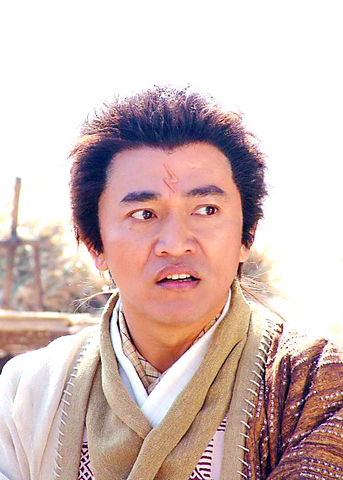
PHOTO COURTESY OF YEN-PING FILMS
The film is intentionally a parody and mocks some hit martial-arts movies of recent years, such as Zhang Yi-mou's (
Chu's films often insist on using poor taste to mock the classics and Two Birds with One Stone is no exception. But he seems to overdo this technique and forgets to tell a complete story. The only character that works is played by Wu in a convincing performance as a slacker who secretly adores the minister's daughter.
Behind the Palace, Beyond the Horizon (
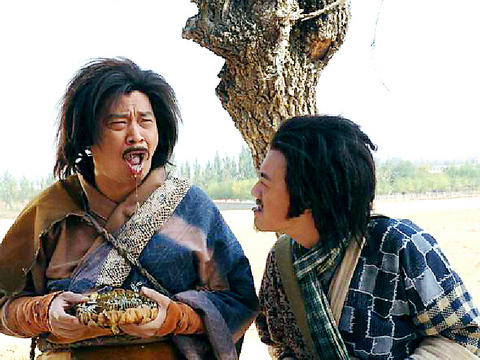
PHOTO COURTESY OF YEN-PING FILMS
In 2003 the National Palace Museum underwent a series of cultural exchange projects in hopes of refreshing its public image. One of them was a "visiting artists" program that invited international artists to visit Taiwan and the museum. The program inspired this PTS documentary.
Film director Wang Hsiao-ti (
Dutch animation filmmaker Gerrit van Dijk is known for his unique style, which uses collage and deformation of images. During his visit to the museum, he is especially intrigued with a Ming-dynasty block print, Stories of the West Chamber (
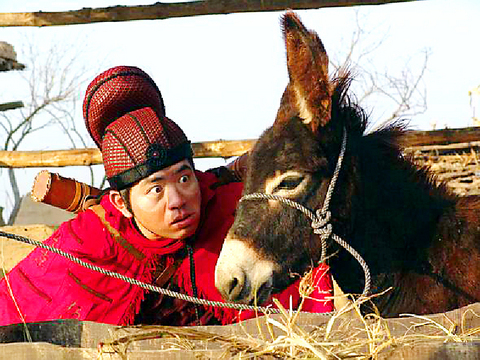
PHOTO COURTESY OF YEN-PING FILMS
Van Dijk praised the work as so refined that he found its execution centuries ago simply unbelievable. And his 40-second animation is made like an impressionist painting, inspired by the block print and also infused with his personal impressions of his Taiwan visit.
French pottery artist Jean Girel owns the title of Maitre d'Art, presented by the French National Committee of Art. Girel came to see the Soong-dynasty china that he had been longing to see. He was also impressed by the animal-shaped ornaments on the bronze wares of the Bronze Age that depict bears, horses and birds.
Apparently, Girel was moved by the spirit of ancient people worshiping the universe and nature. His pottery work, which was made in the studio of Taipei Teacher's College reflects such a spirit. It is graceful artwork, simulating the thick and solid quality of bronzeware and at the same time demonstrates an experimental variation of glazed colors.
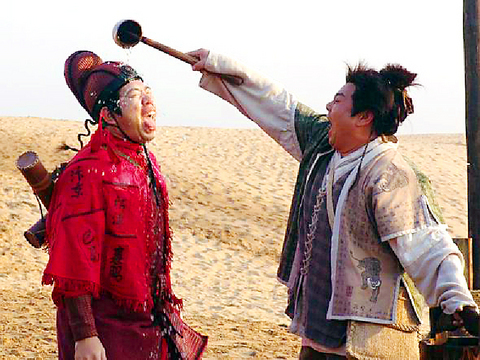
PHOTO COURTESY OF YEN-PING FILMS
As director Wang Hsiao-ti puts it, the relation between the collection pieces and the new artwork is the flow and transformation of creativity, and proves that such an old place like the Palace Museum can still generate new ideas and new creations.
The most valuable part of the film deals with seven architecture and design students and their works. Some were inspired by the art of calligraphy and invented a mechanism that looks like a huge writing brush. Others designed an imaginary world of plastic tubes that was inspired by Qing-dynasty snuff bottles.
From the young creative spirits shown in the film, Wang vividly paints a picture of those ancient collections being infused with new life. They no longer stay static in history but have become part of people's lives.
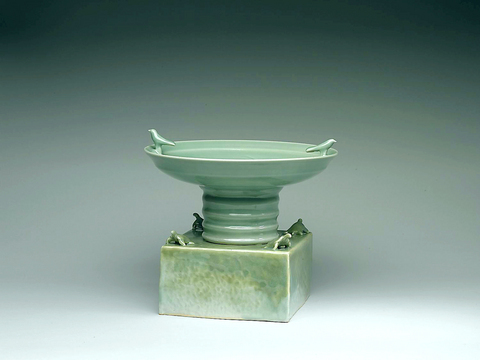
PHOTO COURTESY OF NATIONAL PALACE MUSEUM

PHOTO COURTESY OF NATIONAL PALACE MUSEUM
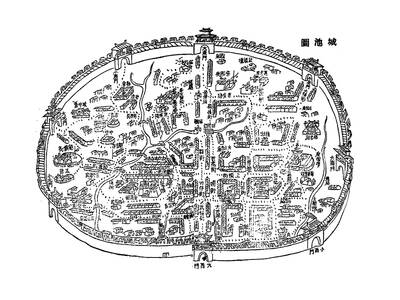
May 26 to June 1 When the Qing Dynasty first took control over many parts of Taiwan in 1684, it roughly continued the Kingdom of Tungning’s administrative borders (see below), setting up one prefecture and three counties. The actual area of control covered today’s Chiayi, Tainan and Kaohsiung. The administrative center was in Taiwan Prefecture, in today’s Tainan. But as Han settlement expanded and due to rebellions and other international incidents, the administrative units became more complex. By the time Taiwan became a province of the Qing in 1887, there were three prefectures, eleven counties, three subprefectures and one directly-administered prefecture, with

It’s an enormous dome of colorful glass, something between the Sistine Chapel and a Marc Chagall fresco. And yet, it’s just a subway station. Formosa Boulevard is the heart of Kaohsiung’s mass transit system. In metro terms, it’s modest: the only transfer station in a network with just two lines. But it’s a landmark nonetheless: a civic space that serves as much more than a point of transit. On a hot Sunday, the corridors and vast halls are filled with a market selling everything from second-hand clothes to toys and house decorations. It’s just one of the many events the station hosts,

Among Thailand’s Chinese Nationalist Party (KMT) villages, a certain rivalry exists between Arunothai, the largest of these villages, and Mae Salong, which is currently the most prosperous. Historically, the rivalry stems from a split in KMT military factions in the early 1960s, which divided command and opium territories after Chiang Kai-shek (蔣介石) cut off open support in 1961 due to international pressure (see part two, “The KMT opium lords of the Golden Triangle,” on May 20). But today this rivalry manifests as a different kind of split, with Arunothai leading a pro-China faction and Mae Salong staunchly aligned to Taiwan.

Two moves show Taichung Mayor Lu Shiow-yen (盧秀燕) is gunning for Chinese Nationalist Party (KMT) party chair and the 2028 presidential election. Technically, these are not yet “officially” official, but by the rules of Taiwan politics, she is now on the dance floor. Earlier this month Lu confirmed in an interview in Japan’s Nikkei that she was considering running for KMT chair. This is not new news, but according to reports from her camp she previously was still considering the case for and against running. By choosing a respected, international news outlet, she declared it to the world. While the outside world